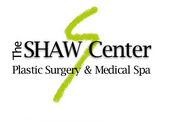Each year, hundreds of thousands of U.S. women decide to increase their breast size. According to the American Society of Plastic Surgeons, in 2010, the latest figures available, breast augmentation was the most preformed cosmetic surgical procedure, up two percent from the previous year. It’s little surprise breast augmentation holds the top spot. It’s held the title since 2006.
What may be more surprising is the procedure previously sought after by affluent white women is gaining wide acceptance among Hispanic, African American and Asian women with dramatic increases among those racial groups. Last year, Americans spent a whopping $10.1 billion on cosmetic procedures, up 1.2 percent from 2009.
The reasons women choose to pursue breast augmentation is as individualized as the women who do it. However, a 2003 survey of 5,000 women conducted by The American Society for Aesthetic Plastic Surgery shows the top reasons are:
- 91 percent wanted to look better without clothes
- 84 percent wanted to look better in clothes
- 84 percent wanted to have larger breasts
- 81 percent wanted to feel better about themselves
- 79 percent wanted to feel more confident
- 74 percent wanted to feel less self-conscious
If you have been thinking about breast augmentation surgery, you probably have a lot of questions. After all, it is a big decision with benefits and risks. We sat down with Dr. Lawrence W. Shaw, a double board certified plastic surgeon and founder of The SHAW Center in Scottsdale, Ariz., to talk about some of the most asked questions women have about breast implant surgery.
EmpowHer:What is breast augmentation surgery and does it have limitations?
Dr. Shaw: Breast augmentation, also known as augmentation mammoplasty, is a surgical enhancement procedure to accentuate the size and fullness of a woman's breasts. While breast augmentation will make the breasts larger, the surgery alone will not lift sagging breasts. A procedure, called mastopexy, is required in combination with breast implants to lift breast. A breast augmentation is a tremendous help to patients who desire a fuller profile, who have lost breast volume due to pregnancy or nursing, or who have undergone breast reconstruction and want to gain a more proportioned look again.
EmpowHer: Dr. Shaw, who is a candidate for breast augmentation surgery?
Dr. Shaw:Patients must be 18 years of age or older, be in good health, understand and have appropriate expectations for their surgery, and have an adult support person be with them in the first 24 hours after breast augmentation surgery.
EmpowHer: Are there certain weight requirements? I heard candidates should be at their ideal weight before having breast implant surgery.
Dr. Shaw: Candidates should be at a stable weight, and, if possible, close to their ideal weight. A significant loss of weight after receiving breast implants could alter the results in a way that is unsatisfactory to the patient. There could be some drooping and a reduction in breast size. Likewise, a significant gain in weight could cause an increase in breast size.
EmpowHer: Are there different types of breast implants?
Dr. Shaw: Yes. The Food and Drug Administration (FDA) have approved two types of breast implants for breast augmentation. Saline filled implants have been used since the early 1970s and have some limitations. The FDA released improved, cohesive silicone gel implants for breast augmentation in 2006 and is the implant of choice in my practice. The advantages and disadvantages of both implant types should be discussed with Dr. Shaw during the consultation process.
EmpowHer: Many women worry about scarring following their surgery for breast implants. Is there a type of incision that can be used that allows for minimal scarring?
Dr. Shaw: Yes. Plastic surgeons use three types of incisions in breast augmentation procedures: under the crease of the breast, through the nipple or in the underarm, known as the transaxillary approach. I prefer the transaxillary endoscopic technique, where breast implants are placed through a small 3 – 4 cm armpit incision. The incision is well hidden in a natural crease of the armpit so when it heals, it is barely noticeable.
EmpowHer: Are there other benefits to the transaxillary endoscopic approach?
Dr. Shaw: I have been performing this type of breast augmentation for over 25 years with great precision, natural results and high patient satisfaction. The endoscope — a long thin tube with a camera at the end — is used to assist in the accurate creation of a pocket under the chest muscle for the breast implant. Also with this approach, most patients experience little to no bruising, rapid healing with a quick return to light activity. Normal activity can be resumed at 4 – 6 weeks.
Sources:
2010 Plastic Procedural Statistics. American Society of Plastic Surgeons. 13 December 2011.
http://www.plasticsurgery.org/News-and-Resources/Statistics.html
Breast Implant Patient Surveys. The American Society for Aesthetic Plastic Surgery. 2003. Accessed through ASAPS on 13 December 2011.
Reviewed on December 16, 2011
Maryann Gromisch, RN
Edited by Jody Smith

Add a Comment2 Comments
I am more interested in the mastopexy. I have lost about 70 lbs and my breasts have gotten droppy. I am also 57 so I am sure age plays a part in it but it seems like it happened a lot more since I lost all the weight. Help!
April 18, 2014 - 8:55amThis Comment
Before and after pictures would be great!
January 16, 2012 - 3:54pmThis Comment